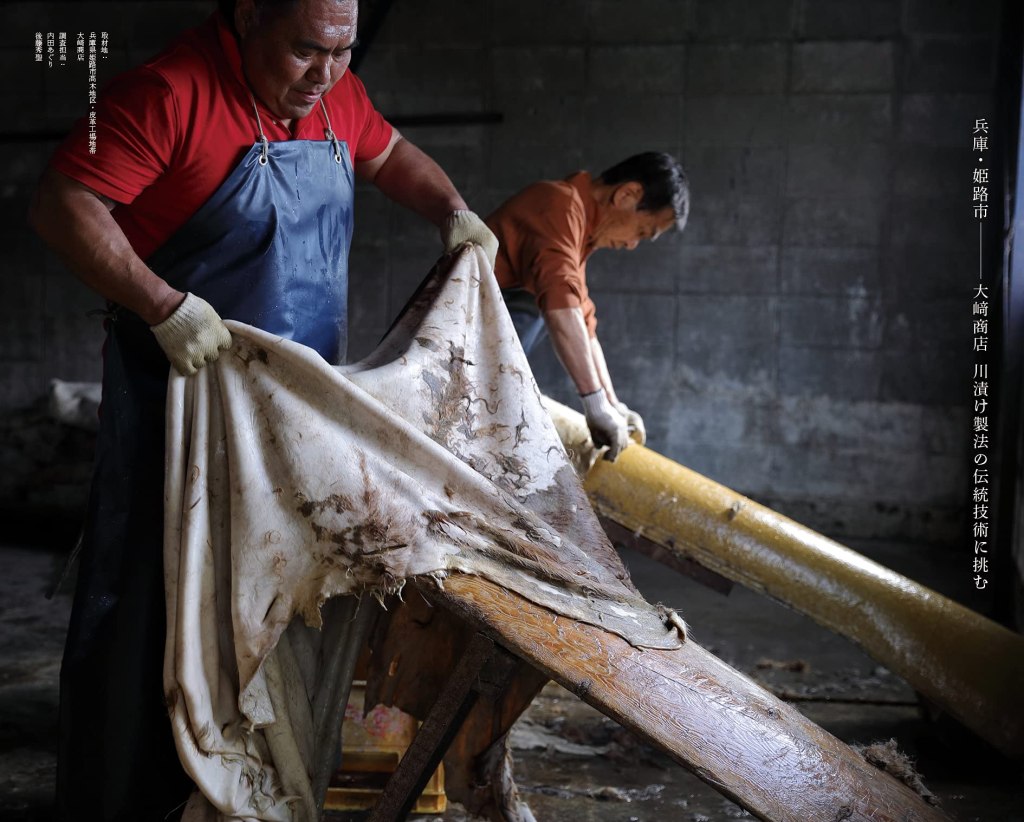By Yuki Katayama
This month we will explore the long but somewhat convoluted and controversial history of nikawa (animal skin glue).
Nikawa is a solid substance traditionally made out of animal (cow, rabbit, deer, etc) skins or bones or a mixture of both. Primarily used in art and art restoration, nikawa can be melted down into a liquid form to mix with pigments for Japanese painting (Nihonga), sizing papers or mixed with soot to manufacture sumi sticks. Interestingly, one of the main uses for nikawa in the 1900s was for match-making. A mixture of potassium chlorate, sulphur and nikawa is used to make the match tip, but with the invention of the disposable lighter in the 1970s, the demand for nikawa in that field slowly diminished.

The origins of nikawa can be traced back to almost 5000 years ago in the northern Eurasia region. Traditionally, the production of nikawa in Japan was done all by hand by descendants of premodern outcast hereditary occupational groups. Any work that dealt with death was considered unclean or tainted in Buddhism and Shintoism and was thus designated to these discriminated communities. Although nikawa making is enveloped in a dark and unfortunate history of Japan, the standard of the nikawa that was made during this time is recorded to have been of exceptional quality.

(Credit: “The Journey to Nikawa”)
The hand processed nikawa (wa nikawa) contained many essential nutrients that were otherwise removed from the later machine processed (yo/western nikawa) ones. The industrial process removes all ‘impurities’, including sodium, potassium and phosphorus which are naturally occurring in the animal skin. These chemical elements aid in moisture absorption as well as water retention which is crucial for traditional nihonga painting and restoration of historical/cultural assets when an artifact needs to be remoistened to remove old adhesives. Wa nikawa is also known as sanzenbon, which translates into ‘3000 strips’, because that is the amount of nikawa sticks that are produced from one cow. The last manufacturer of traditional sanzenbon closed down in 2011, and now only the industrial version (with most chemical impurities removed) of nikawa is being made.
The Nikawa that we carry at Hiromi Paper is made industrially, and uses a unique process to mitigate the strong smell that traditional nikawa would otherwise have. The quality of the nikawa is similar to that of the wa nikawa, and is widely used amongst artists and conservators in Japan as well.

How to make nikawa:
Nihonga artists swear by the ratio of 1 nikawa stick to 100cc of water.
- Place the cut up nikawa stick into water, and leave overnight
- Heat up the nikawa in a separate pot of hot water; do not place the nikawa on direct heat.
- Make sure the temperature does not exceed 60℃ / 140°F. Because nikawa is a gelatin/protein, thermal denaturation starts to occur around that temperature and drastically starts to lose its adhesive strength.
*This change is irreversible; much like once an egg is boiled it cannot go back to its previous form.
References:
“The Journey to Nikawa – Tracing the Cultural Origins” by Aguri Uchida and Musashino Art University. 2021.
Amanosan Cultural Heritage Research Institute http://amanosan.com/
“Culture of Nikawa” by Tsuneyuki Morita. 2003.

